Sunrise ceremony commemorates 200th anniversary of King Kamehameha I’s death
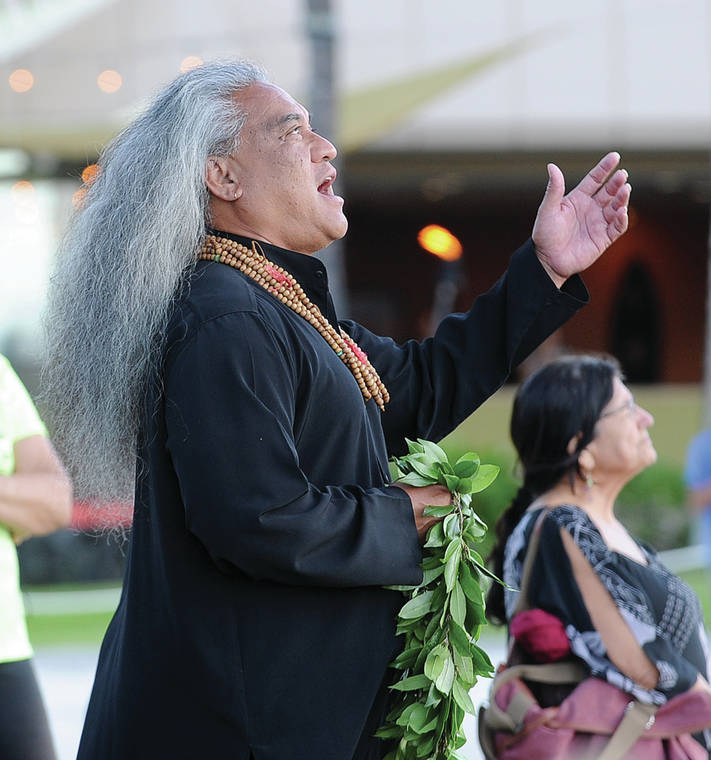
Kumu Keala Ching chants as the sun rises above Hualalai Wednesday at Kamakahonu Bay at the commemoration of the 200th anniversary of King Kamehameha the Great’s passing. (Laura Ruminski/West Hawaii Today)
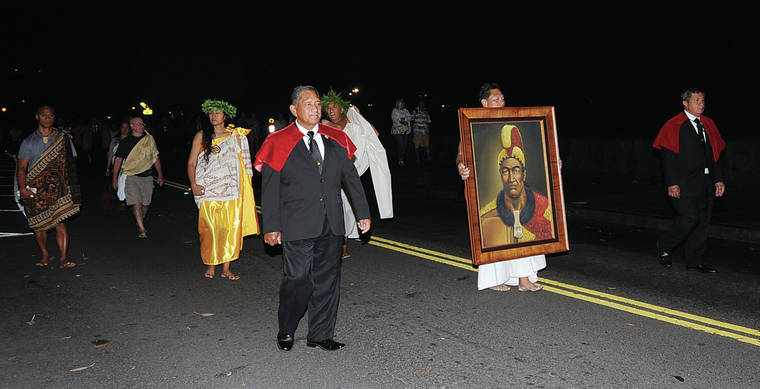

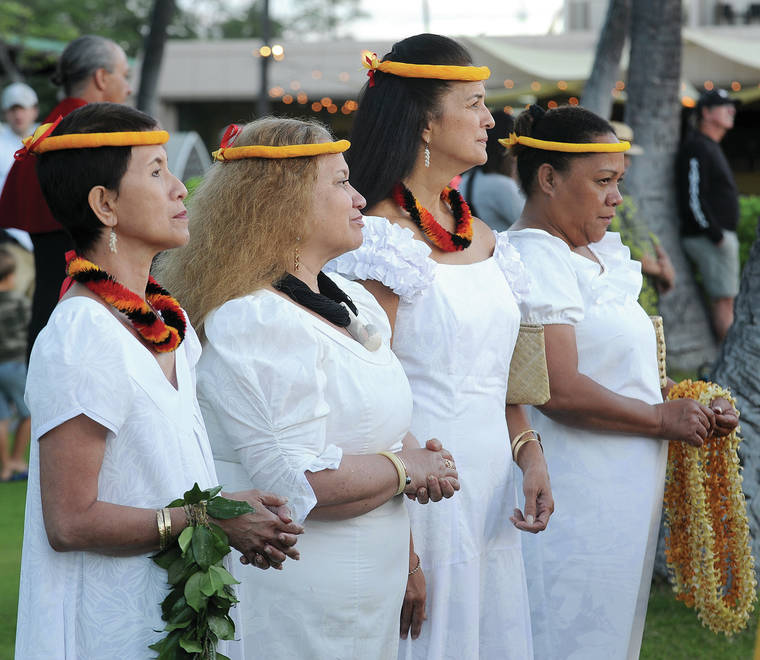
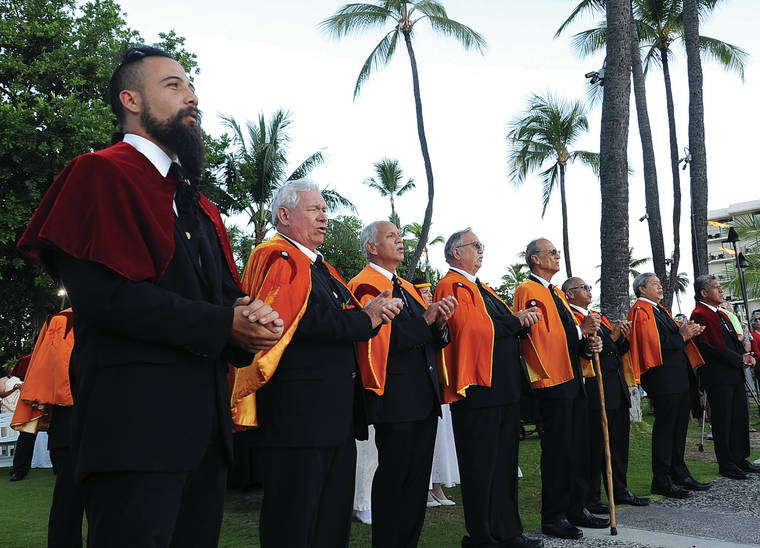
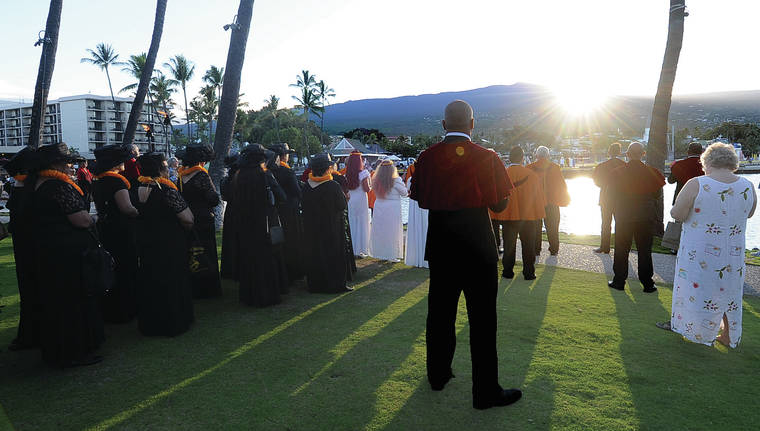
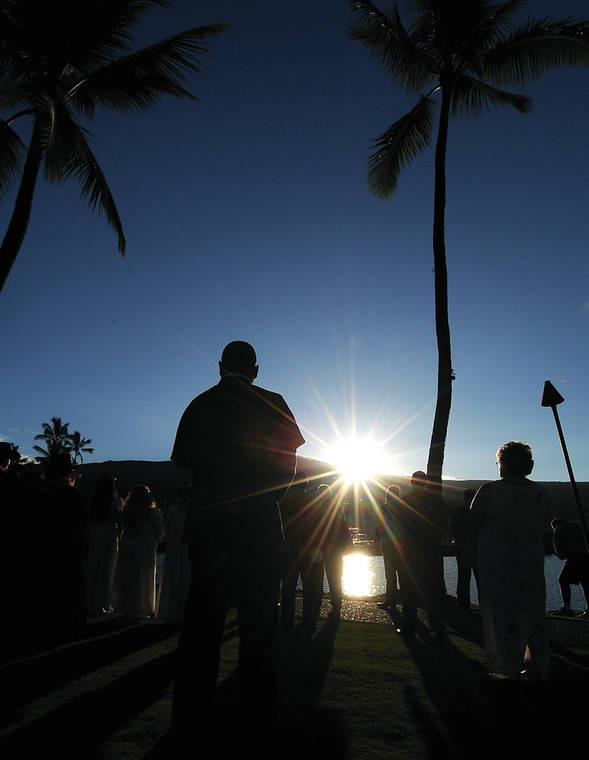
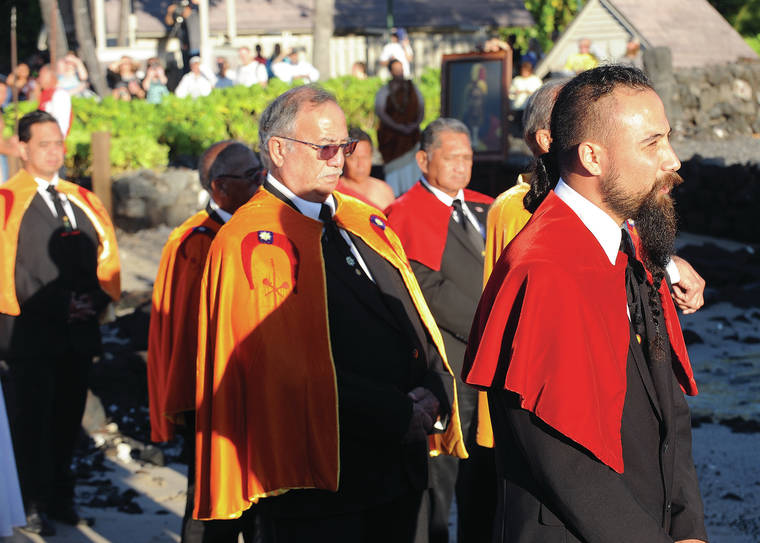
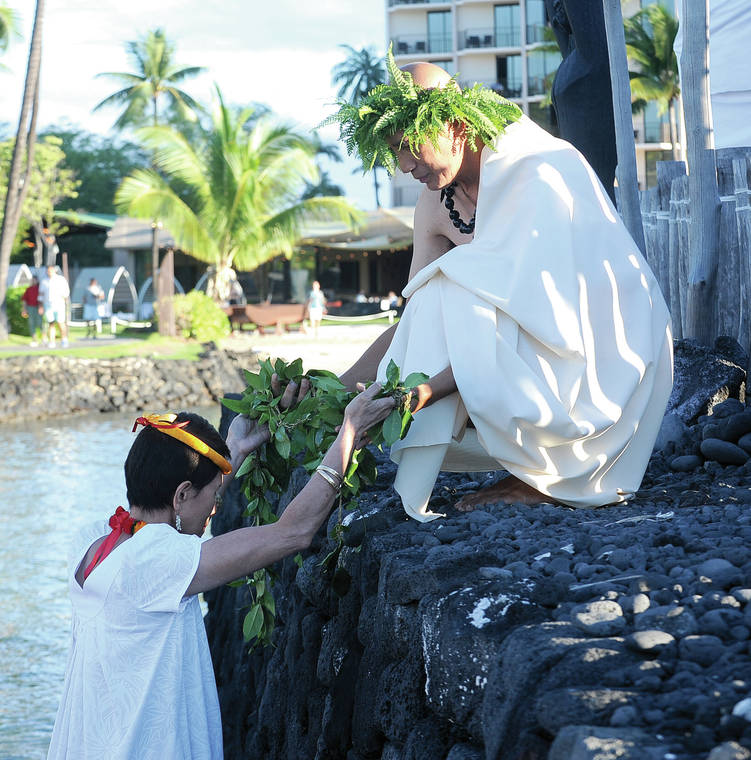

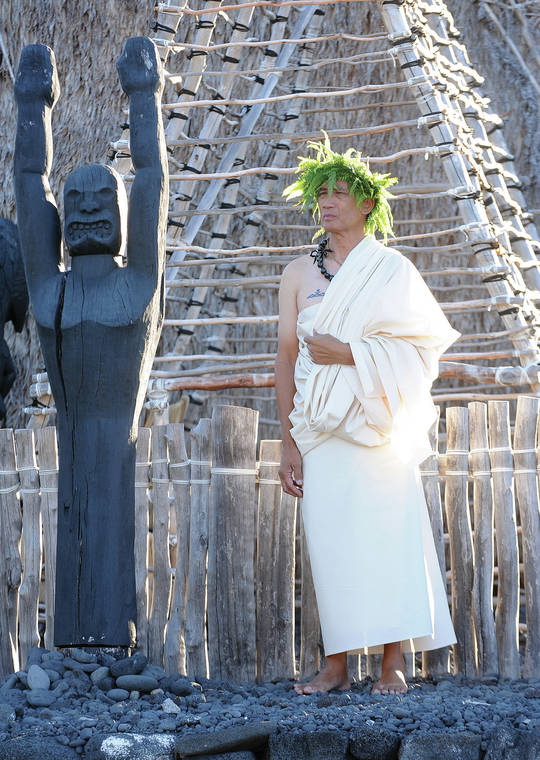
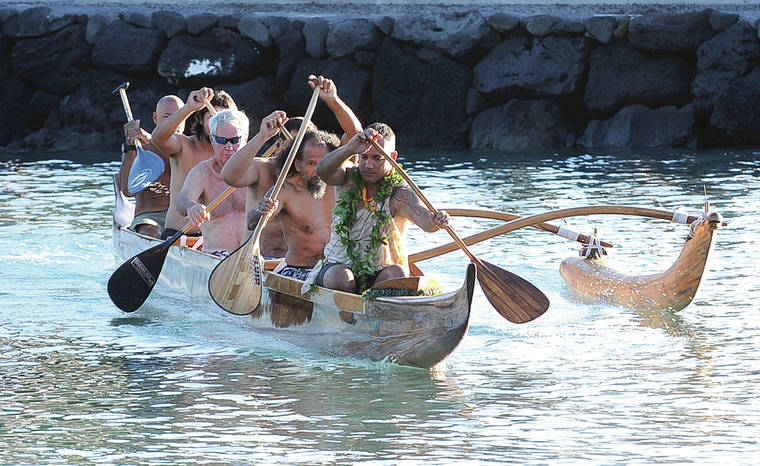
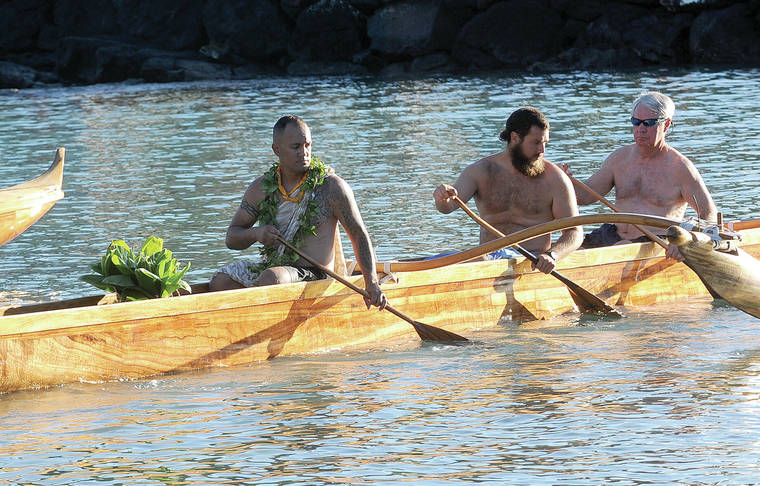
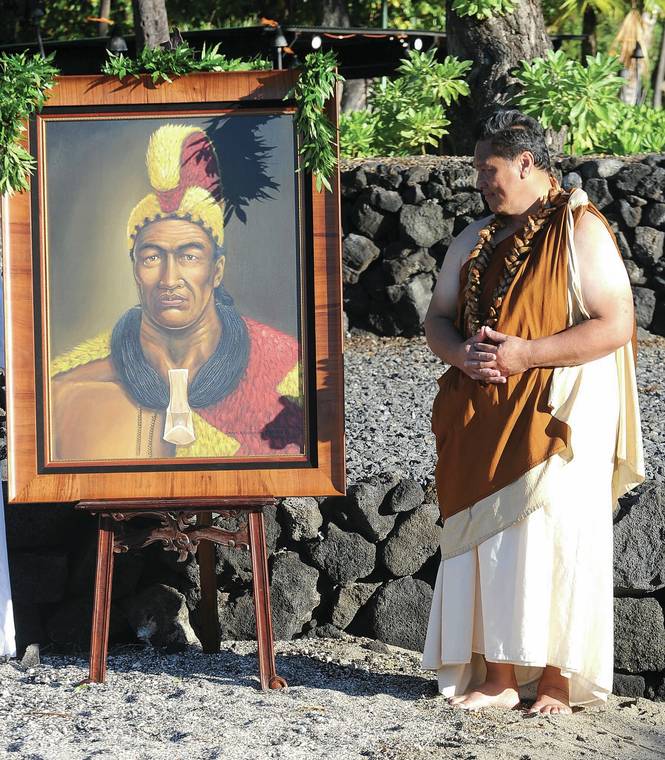
Kealoha Kaopua stands next to a portrait of King Kamehameha I at the commemoration of the 200th anniversary of his passing Wednesday morning at Ahuena Heiau. (Laura Ruminski/West Hawaii Today)
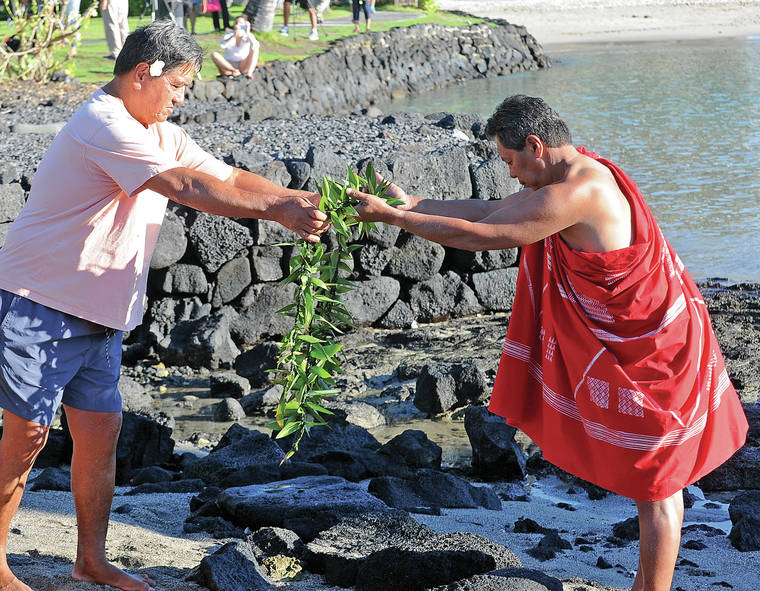

KAILUA-KONA As light started to flood the grounds of Ahuena Heiau on Wednesday morning, the only sounds heard were the songs of birds in the trees and the crash of waves against volcanic rock.
KAILUA-KONA — As light started to flood the grounds of Ahuena Heiau on Wednesday morning, the only sounds heard were the songs of birds in the trees and the crash of waves against volcanic rock.
When the clock struck 6:30 a.m., right as the sun broke through the top of Hualalai, the silence in the crowd of people at the sacred site was broken, too.
Kumu Keala Ching started the chant “E Ala E,” and he led a crowd of Hawaiian cultural groups and bystanders to greet the sunrise and begin the giving of hookupu, or gifts, to remember one of the great Hawaiian leaders.
The ceremony was a commemoration of the 200th anniversary of the death of King Kamehameha I. It was marked by a crowd of more than 100, who, while the stars were still out and most of Kailua-Kona slept, started a procession from Hale Halawai on Alii Drive to the grounds of Ahuena Heiau.
After seeing the crowd that sacrificed their sleep to join the ceremony, Ahuena Heiau Inc. board chair Tom Hickcox said he could only describe himself as one word — humbled.
“Because of the significance of the event and then the fact of the number of people that actually turned out to commemorate this event, it was just very humbling for me,” Hickcox said. “And I appreciate that there are people in our community that remember and recognize Kamehameha.”
Hickcox and Ahuena Heiau Inc. were the ones behind the commemoration. Ahuena Heiau, Inc. is a nonprofit dedicated to preserving Ahuena Heiau, a religious temple that served King Kamehameha I and was the site of his death on May 8, 1819.
Ahuena Heiau is located in Kamakahonu Bay, on the grounds of what is now King Kamehameha Kona Beach Hotel.
The Royal Order of King Kamehameha I, Ahahui Kaahumanu, Daughters of Hawaii, Hawaiian Civic Club, Kai Opua Canoe Club, and Ahuena Heiau, Inc. were all part of the ceremony.
Some of those in attendance were not a part of any cultural group, but were there to pay their respects to a great king and a Hawaiian legacy.
“They will take away the feeling of being a part of something very, very special,” Hickcox said. “There is only one Kamehameha I, and there will only be one 200th year commemoration of his passing.”
“It has cultural significance,” said Kumu Kauhane Heloca, a member of Ahuena Heiau Inc. who helped lead the procession. “As much as all cultures are being bombarded and slowly stripped away, we’re unique in that we still have places like this.”
Heloca said ceremonies like the commemoration usually take place at sunrise or at noon, the times when spiritual powers are stronger.
“We’re the culture that has so much grace and aloha, but yet, we’re very strong to our values and who we are as a people,” Kumu Leina’ala Fruean said. “So this morning is significant, and doing it at this time at this location is significant, because this was the last seat of power during the reign of Kamehameha. And when he passed, the words he left to his people were: ‘Continue to pursue my unfinished good deeds.’”
Kamehameha I, also called Kamehameha the Great, was born in the Kohala region of Hawaii Island, and was the first ruler of the Kingdom of Hawaii after he successfully united the islands.
The unification of the islands is one of the main reasons why his life is still celebrated in Hawaii 200 years later.
“He was prophesied significantly before he was born — that there would be a king that would rise to be the one to unite the Hawaiian island chain,” Fruean said. “So if you look at the story of King Kamehameha and his life, his life really commemorates all the islands coming into unity.”
Fruean pointed out the 200th anniversary of the death of King Kamehameha I will be followed by the 200th anniversary next year of the arrival of missionaries to the Hawaiian Islands, which occurred in 1820. Fruean said both dates are significant in the timeline of Hawaiian history, and the stories should be remembered by future generations.
“We have kuleana to teach the next generation all of what they need to learn,” Fruean said. “And they need to embrace their education and the stories of our kupuna, or the legacy of our kupuna, the heritage that we have, and to be a proud nation and a proud people.”
Heloca said he hopes events like the commemoration continue to keep the legacy of Hawaiian history and Hawaiian culture alive.
“Whatever we have, we really have to embrace it and learn the culture and connect,” Heloca said. “It’s been a hard road to keep the young ones interested in the culture. So hopefully little things like this can spark their interest and a few will continue.”


